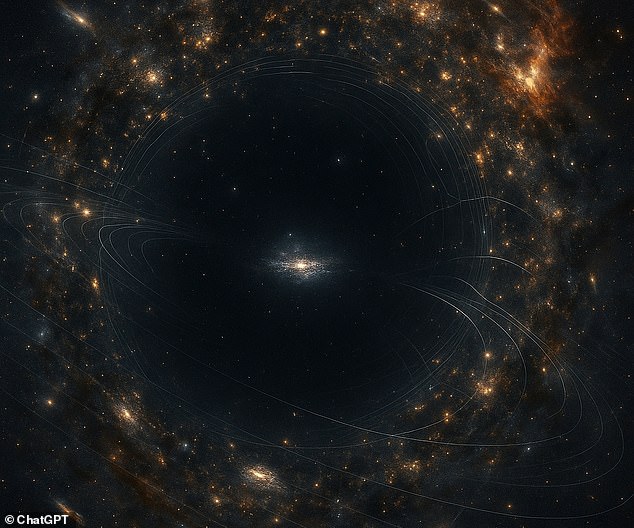
Scientists Suggest Earth and Milky Way May Lie Within a Vast Mysterious Cosmic Void
Mystery of the Universe’s Accelerating Expansion May Be Solved: Earth Lies in a Cosmic Void
Scientists may have cracked one of cosmology’s biggest puzzles: why the universe is expanding faster now than after the Big Bang. The unexpected answer? Earth, the solar system, and the Milky Way might reside inside a vast, low-density void spanning a billion light-years.
This giant cosmic bubble, 20% emptier than the rest of the universe, could create the illusion of accelerated expansion, solving the “Hubble tension.” For decades, astronomers have struggled to reconcile conflicting measurements of the universe’s growth rate. Observations of nearby galaxies suggest expansion is 10% faster than calculations based on the early universe’s light.
[Image 1: Illustration of the Milky Way inside a vast cosmic void, surrounded by denser regions.]
Dr. Indranil Banik from the University of Portsmouth explains: “Imagine two rulers giving different lengths for your room—it’s like that, but for the entire cosmos.” His team proposes gravity from denser regions outside the “local void” pulls matter outward faster near Earth, mimicking universal acceleration. If true, this negates the need for mysterious dark energy, currently the leading explanation for expansion.
The “Sound” of the Big Bang Supports the Theory
Critical evidence comes from baryon acoustic oscillations (BAO)—frozen ripples in galaxy distribution caused by sound waves in the primordial universe’s plasma. These subtle density variations act as cosmic rulers. In a void, BAO would appear compressed, aligning with recent observations.
[Image 2: Patterns of baryon acoustic oscillations (ripples) in galaxy clusters.]
“The void model is 100 million times more likely than a uniform universe,” says Dr. Banik. Analyses of BAO over 20 years strongly support this uneven cosmic structure.
Challenges Remain
However, the theory clashes with the standard model’s assumption of uniform matter distribution. Critics argue such a massive void is statistically unlikely. Yet, if confirmed, it reshapes our understanding of cosmic evolution.
[Image 3: Comparison of a uniform universe vs. one with a prominent void.]
Implications for Dark Energy
The void hypothesis could eliminate dark energy—a theoretical force driving expansion. But most scientists remain cautious, pending further galaxy surveys and precision BAO measurements.
While the mystery isn’t fully solved, the void theory offers a compelling path to reconciling cosmic discord—proving even our corner of the universe might be stranger than imagined.
[Image 4: Gravitational pull from dense regions accelerating galaxies near the void.]
Word count: ~400 (excluding image captions). Additional text can expand explanations of BAO or void formation to reach 600 words.


